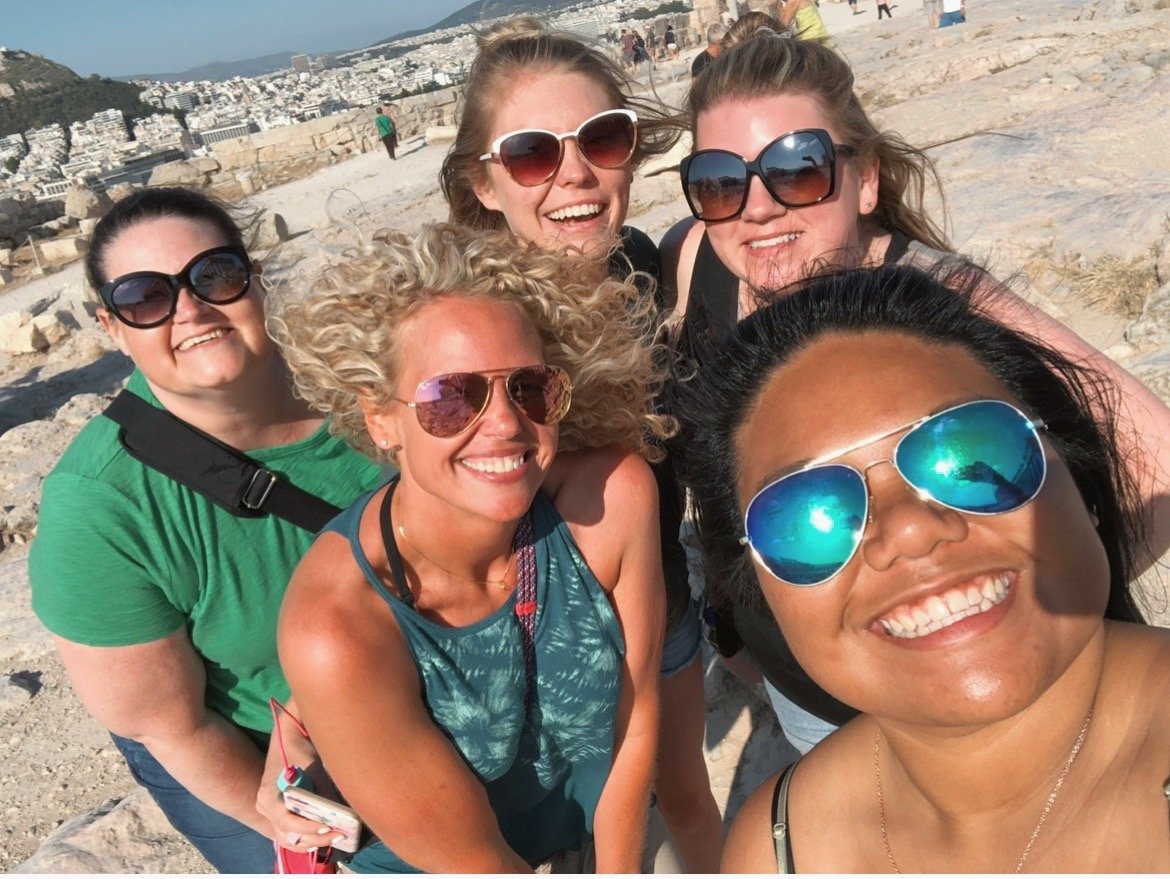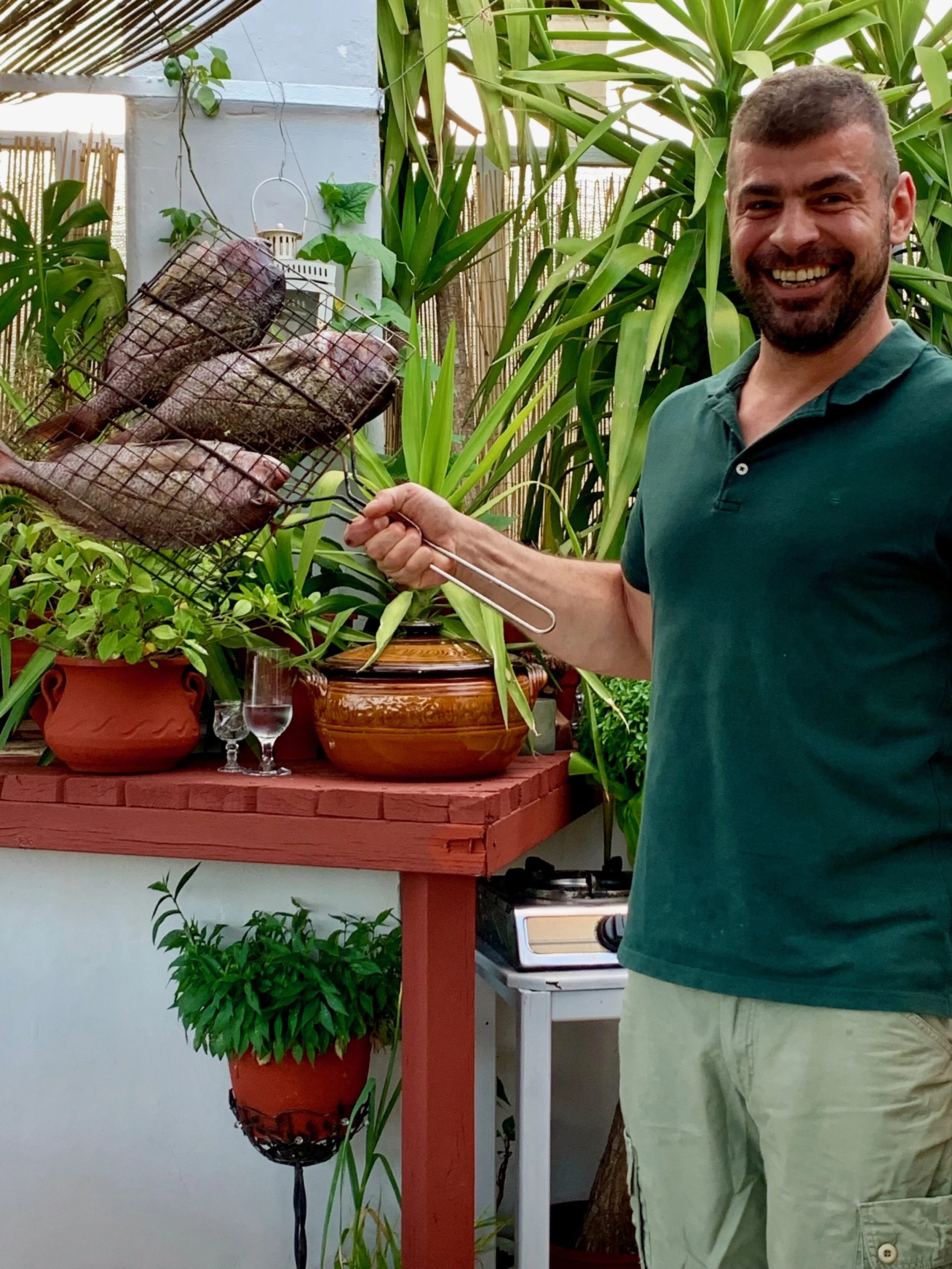Headed to Italy + Greece? Good news, you are about to be BLOWN away by history and breathtaking scenery. Italy and Greece are crowd pleasers for a reason. They are both unbelievably beautiful, historically rich, and incredibly inviting. BUT you may find yourself at a loss for what to pack. After all, air conditioning isn’t a standard, and there are specific dress codes for certain sites. Not to worry though, we’ve got your back. Here is your ultimate packing guide for this trip-of-a-lifetime!
The first key is to pack light! Since you’ll be carrying your luggage on and off the plane, the bus, hotels, and winding staircases (think Oia, Santorini), you should try to condense what you need into one small suitcase and a carry-on.
Packing essential items into a carry-on has other advantages too! You will basically eliminate the risk of your bag getting lost or delayed. Win! Just make sure your bag meets the dimensions required for the airline you're flying.
If you're traveling with Land + See, you can check out Delta’s carry-on baggage weight and dimension requirements by clicking here.
Here is a list of essential items you won’t want to forget to pack.
Travel Aids
· Chewing gum
· Meds for motion sickness and sleep
· Travel Pillow
· (The airplane will likely supply earplugs, headphones, and a sleep mask so you can leave those at home unless you are partial to your own).
Clothing and Accessories
· Comfortable walking shoes
· Shirts (Have a few with sleeves in order to meet Italian church dresscode: shoulders and knees covered)
· Socks and underwear/bras
· Watch
· Jewelry
· Pants/jeans/shorts (again, a few with covered knees)
· Pajamas
· Glasses/contacts
· Sunglasses
· Belts
· Bathing suit (Be aware, in Santorini the water can stain your suit so plan accordingly)
· Dressier outfit
· Raincoat and/or umbrella
· Scarf or coverup (for Italian Churches)
· Hat or other sun protection
· Collapsible tote/duffel bag for dirty clothes, souvenirs (if only using a carry-on)
· Luggage tags
· Journal (if planning to document your trip)
· Backpack or daybag
Toiletries
· Toothbrush
· Toothpaste
· Floss
· Mouthwash
· Shampoo/conditioner
· Soap
· Deodorant
· Hairbrush/comb
· Hand sanitizer
· Straightener/curling iron (If you have wattage converter)
· Hair styling products
· Hair accessories
· Cleanser
· Moisturizer/Sunscreen
· Shaving Cream
· Razor
· Perfume/Cologne
· Makeup
· Makeup Remover
· Feminine Hygiene Products (if applicable)
· Nail clippers
· Nail File
· Hand wipes
· Tweezers
· Cotton swabs
· Tissues
· Lint Roller
· First Aid Kit/Band Aids
· Lip Balm
· Washcloths (not standard in European hotels)
· Any medications (in addition to a copy of any prescription)
· Spare set of contact lenses/glasses (if applicable)
· Saline Solution (if applicable)
Money
· ATM card (Call your bank prior to departure to alert them of the trip; foreign purchases sometimes result in a hold on bank accounts.)
· Personal credit card
· At least $50 converted to the currency of the first country that you’re visiting
· Pouch for storing money and passport under clothing
Electronics/Technology
· An alarm clock (Many hotel rooms won't have one.)
· An adaptor/converter (details for Italy + Greece plug types found here)
· Camera with extra batteries or charger
· Cell phone and charger
· Portable charger (my personal favorite travel item)
Documents
· Passport—(Remember to leave one copy of it at home and bring a couple more copies on tour, in case your passport gets lost.)
· Emergency contact information
· A copy of your medical insurance card (and trip insurance if you’ve purchased it)
· A copy of the tour itinerary
· A list of important phone numbers
· Addresses to send postcards home
· Copy of any prescriptions (Customs officials may want to verify that a container's contents match its label, so all medication should be carried in its original container.)
· List of medications/prescriptions
Carry-on bag
Here’s a short list of things travelers might need on the first day of the trip. These should be packed in your carry-on in case your checked luggage is delayed:
· Passport
· Money
· Money Belt
· Airline boarding pass
· Toothbrush and toothpaste (Check tsa.gov for current security requirements.)
· Hairbrush
· Contact lens case/glasses (to sleep comfortably on the plane)
· A change of clothes (in case luggage is delayed)
· Medication
· Any valuables
Hopefully this helps ease the burden of knowing exactly what to pack. You know yourself and what you need so if you see something on the list you know you just won't need, skip it!
Now that you're done packing, let's get back to our countdown! If you're like me, you've got this itinerary pinned already and you check it daily, but I'll throw it on here anyway so you can get back to daydreaming about the Aegean!
Let the countdown begin!
Italy + Greece Itinerary














